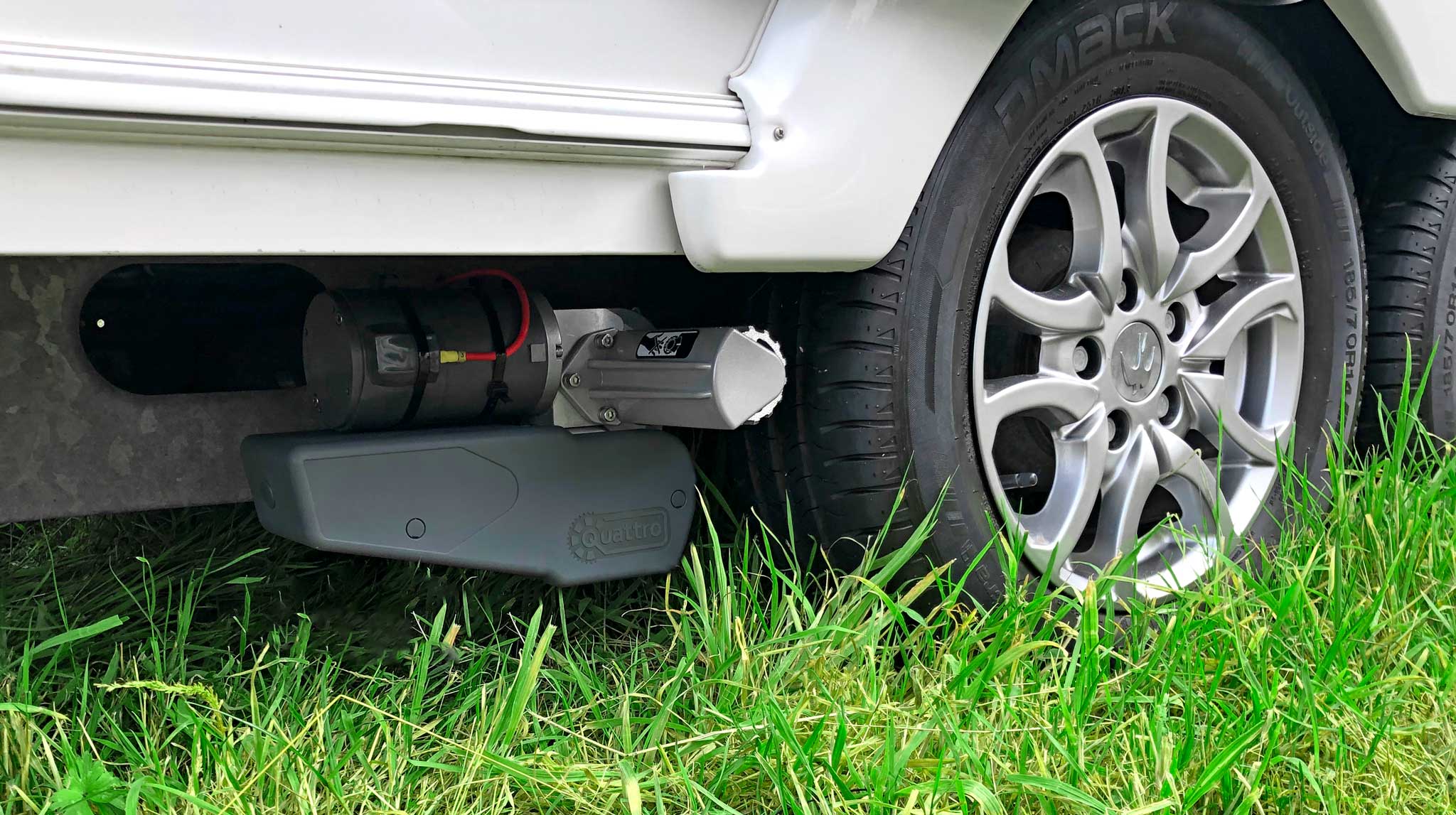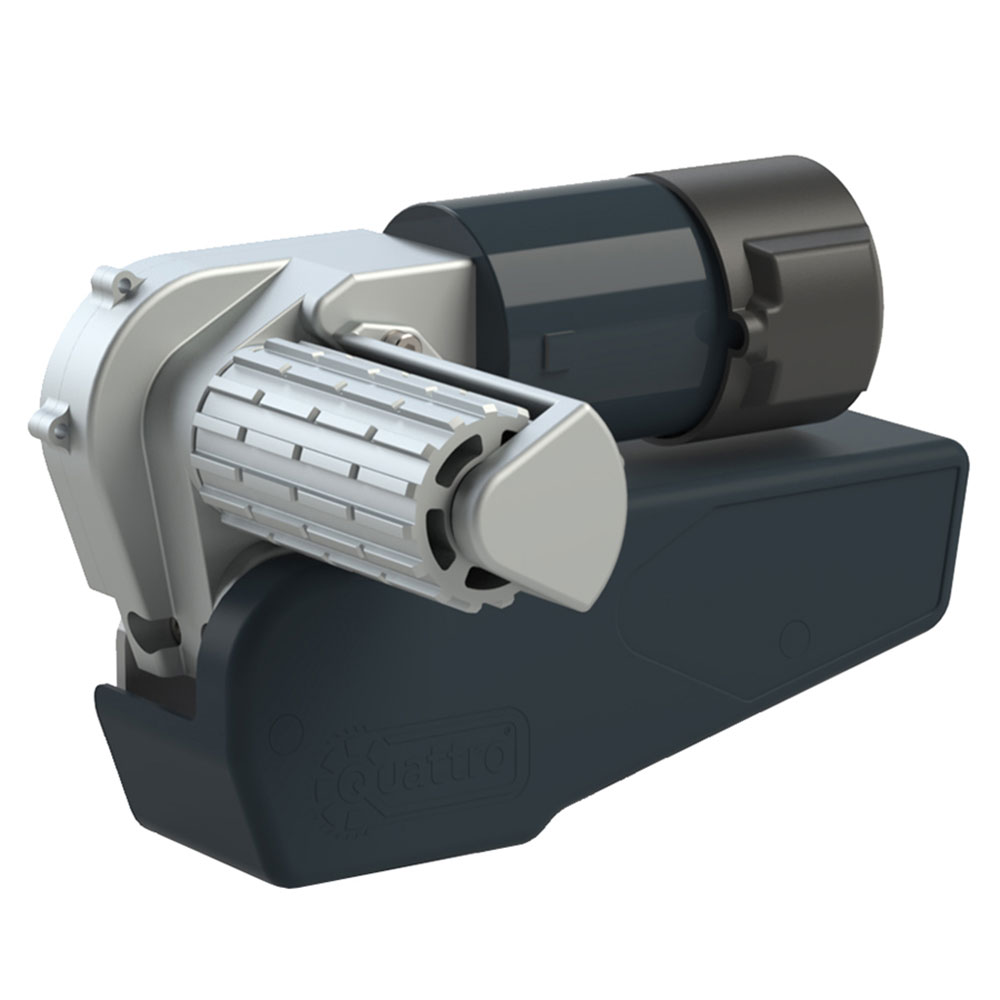I recently purchased a Adria Adora 492DT and as part of that purchase had Quattro Platinum caravan movers installed. The movers are basically for manoeuvring the van down a difficult driveway for storage.
At first attempt, there was some slipping of the movers against the tires. My driveway is mostly a 5 degree downward slope and here the movers work flawlessly. There is one short section at 9 degrees where they slipped. At the time the van weighed 1650kg. I backed the caravan down the slope and the movers are installed in front of the wheels, if that makes a difference. The driveway is between two houses so any sudden slip saw the shiny new caravan lurch suddenly toward one of the houses.
The gap between the disengaged movers and tyres seems correct at 20mm.
The tyre pressures were different in each wheel. One side 46psi and the other 55psi which is not ideal. The recommended tyre pressure for the van is 58psi and the tyres have a maximum 65psi rating.
The tyres, being brand new, are oily to touch and the tread pattern is very smooth. They are Ovation V02 which are sometimes described as low rolling resistance.
Need some advice on how best to avoid slippage.
Is 1650kg at 9 degrees (16%) too much? Specs say 2250kg (flat) or 1500kg on a 25% incline so it is on the upper side.
I need to fix the tyre pressure, but what pressure is best - 58psi (recommended) or 65psi (maximum)?
Does it make any difference if I take the van down the hill frontward vs backward?
Are the smooth, oily, low rolling resistance tyres contributing to the problem?
Appreciate any assistance.
At first attempt, there was some slipping of the movers against the tires. My driveway is mostly a 5 degree downward slope and here the movers work flawlessly. There is one short section at 9 degrees where they slipped. At the time the van weighed 1650kg. I backed the caravan down the slope and the movers are installed in front of the wheels, if that makes a difference. The driveway is between two houses so any sudden slip saw the shiny new caravan lurch suddenly toward one of the houses.
The gap between the disengaged movers and tyres seems correct at 20mm.
The tyre pressures were different in each wheel. One side 46psi and the other 55psi which is not ideal. The recommended tyre pressure for the van is 58psi and the tyres have a maximum 65psi rating.
The tyres, being brand new, are oily to touch and the tread pattern is very smooth. They are Ovation V02 which are sometimes described as low rolling resistance.
Need some advice on how best to avoid slippage.
Is 1650kg at 9 degrees (16%) too much? Specs say 2250kg (flat) or 1500kg on a 25% incline so it is on the upper side.
I need to fix the tyre pressure, but what pressure is best - 58psi (recommended) or 65psi (maximum)?
Does it make any difference if I take the van down the hill frontward vs backward?
Are the smooth, oily, low rolling resistance tyres contributing to the problem?
Appreciate any assistance.



